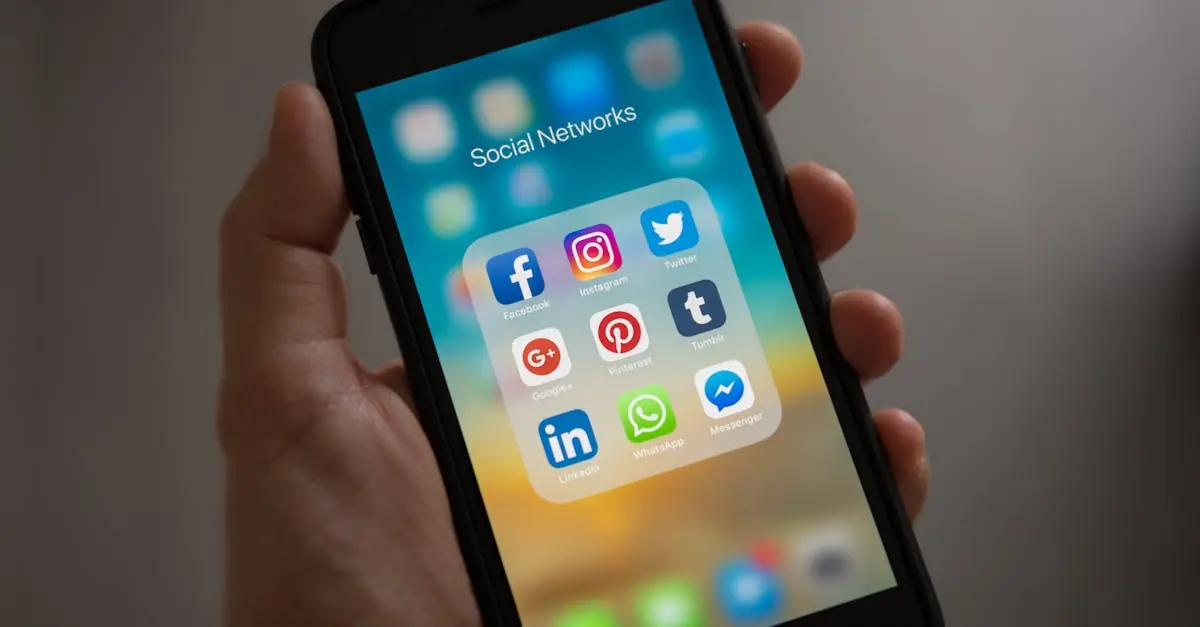When life throws a curveball and your iPhone 10 meets an unfortunate fate—like a faceplant on the pavement—you might be wondering how much it’ll cost to bring it back to life. After all, a cracked screen isn’t just a minor inconvenience; it’s a daily reminder that your phone has seen better days.
Table of Contents
ToggleOverview of iPhone 10 Screen Replacement
Replacing an iPhone 10 screen involves multiple factors affecting the total cost. Many service providers offer different pricing structures, with costs typically ranging from $150 to $300. The price may depend on whether the replacement occurs at an Apple Store or a third-party repair shop. Apple-authorized service locations often charge more but provide guaranteed quality and genuine parts.
Screen quality also plays a significant role. OEM (original equipment manufacturer) screens cost more than aftermarket alternatives, which could affect the total repair bill. Labor fees vary significantly based on location and experience level of the technician. Expect to spend extra if you choose a particularly reputable provider.
Warranty considerations are essential. If the phone has AppleCare+, users enjoy reduced repair costs, generally around $29 for screen replacements. Without coverage, out-of-warranty repairs incur higher fees. It’s crucial to assess whether investing in a screen replacement makes financial sense, especially compared to purchasing a new device.
Timing can influence costs as well. During peak repair seasons, like holidays, prices might increase due to high demand. Scheduling repairs during less busy times can lead to lower expenses.
Prioritizing screen protection can prevent further damages. Utilizing screen protectors or rugged cases may delay or avoid the need for replacement altogether. Opting for preventive measures reduces long-term costs associated with repairs.
Factors Affecting Replacement Cost
Replacement costs for an iPhone 10 screen depend on various factors. These include the type of screen used, the repair service type, and other variables that significantly influence the overall expense.
Screen Type and Quality
OEM screens offer superior quality and compatibility, thus their prices range from $200 to $300. Aftermarket options present a less expensive choice, typically costing between $100 and $200. Screen durability differs between these two types, impacting the longevity and performance of the repaired device. Users willing to invest in an OEM screen experience better display quality and reliability. Alternatively, choosing an aftermarket screen provides cost savings but may result in reduced performance over time. The rise in screen quality directly correlates with the replacement cost.
Repair Service Type
Using an Apple Store for repairs incurs higher costs, averaging $250, due to brand guarantees and expertise. Third-party services typically range from $150 to $200, offering more budget-friendly options without sacrificing quality. Depending on the technician’s experience, labor fees can differ significantly. Warranty coverage, like AppleCare+, often lowers costs at Apple locations. Timing also plays a role; popular repair shops might charge higher rates during peak seasons. Weighing these options helps users make informed decisions regarding their iPhone 10 screen repair.
Average Cost of iPhone 10 Screen Replacement
Costs for replacing an iPhone 10 screen typically range from $150 to $300. Factors that influence the price include whether the repair is conducted at an Apple Store or by a third-party service. OEM screens generally cost between $200 and $300, providing better quality and compatibility. Aftermarket screens offer more affordability, with prices from $100 to $200, but users might experience reduced performance over time. Labor fees also vary based on geographical location and technician expertise.
Comparison of DIY vs. Professional Repair
DIY repairs can initially seem cost-effective but carry risks. Professional repairs ensure quality, with technicians trained in handling delicate components. Costs for professional services usually fall between $150 and $300, which includes both parts and labor. Consider the warranty status; repairs by Apple maintain device integrity, whereas DIY fixes sometimes void warranties. Professional options, especially at Apple Stores, yield better long-term reliability. Conversely, DIY enthusiasts spend around $100 for parts, yet may face complications during installation. Quality assurance often makes professional repair the more sensible choice.
Warranty and Insurance Considerations
Warranty coverage plays a significant role in the cost of iPhone 10 screen replacement. Users with AppleCare+ enjoy reduced repair costs, typically around $29 for screen damage. Coverage under AppleCare+ extends for two years from the purchase date, providing peace of mind for many.
Insurance policies often cover screen damage but vary by provider. Some carriers offer specific mobile device insurance options, which might include a deductible ranging from $50 to $150 per claim. They typically require filing a claim to initiate the repair process.
Prioritizing warranty and insurance choices can lead to substantial savings. Users without coverage face higher out-of-pocket costs. Opting for repairs at authorized service providers helps maintain warranty validity, ensuring devices remain eligible for further service.
Understanding the terms of coverage is crucial. Users should review the policy details to grasp what constitutes accidental damage. Certain policies might exclude cosmetic damage, like scratches, while others provide a broader definition.
Policyholders need to act quickly after damage occurs. Timely action can prevent further harm and may streamline the claims process. Users may experience additional charges if repairs exceed the coverage limit, emphasizing the importance of clarity in insurance agreements.
Costs also shift depending on the service used. Third-party repair shops may not honor warranties but often offer competitive pricing. Assessing the benefits of coverage against repair costs can guide users in making informed decisions regarding screen replacement.
Replacing an iPhone 10 screen can be a significant investment but understanding the costs involved helps users make informed choices. With options ranging from OEM to aftermarket screens and varying repair services, users can select what best fits their budget and needs. Those with AppleCare+ enjoy substantial savings while DIY repairs present a cost-effective alternative, albeit with risks. Prioritizing timely repairs not only restores functionality but also prevents further damage. Ultimately, evaluating warranty and insurance coverage alongside repair costs ensures a well-rounded decision, allowing users to get their device back in top shape without breaking the bank.



